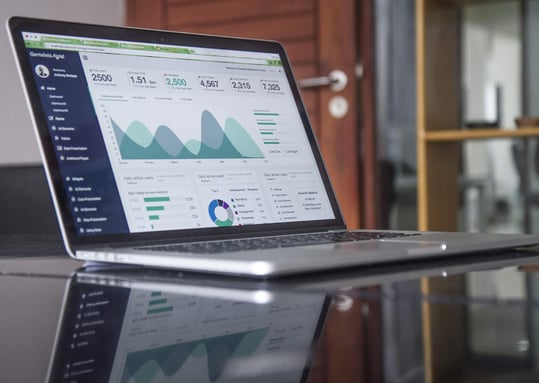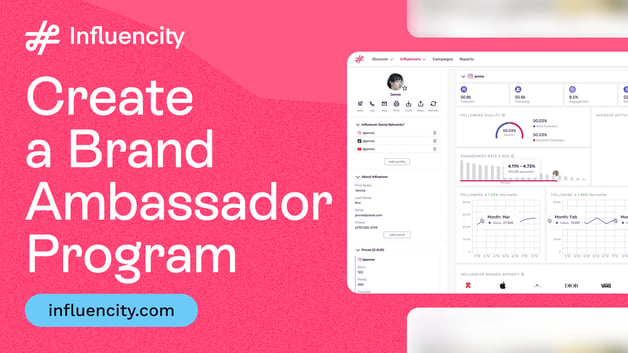Influencer Marketing
Influencers Who Drive Sales: How Performance-Based Marketing Works
Influencer Marketing
It is a known fact that influencers can create excellent business opportunities for businesses and brands. For instance, an influencer can place a brand in a good position and help it to get better visibility. On the other hand, when the association between an influencer and a brand is not managed well, the same actions with influencers may lead to a negative influence on a brand. The focus of any sound marketing strategy should be on various techniques so that the objectives such as awareness campaigns and branding campaigns can be met. While brands can opt for performance campaigns, there can be also performance campaigns done via influencers. The latter is referred to as performance-based influencer marketing.

The Power of Influencer Marketing
Why are so many brands doubling down on influencer marketing? Does it really work beyond visibility and likes? The answer is yes, and here’s why.
1. Access to segmented audiences with built-in trust
Imagine stepping into a community where trust is already established. Influencers have audiences that value their recommendations and engage with their content naturally. This allows brands to join authentic conversations rather than interrupt them with ads no one asked for.
2. Content that truly connects
89% of marketers report that the ROI of influencer marketing is comparable to or better than other channels (Influencer Marketing Hub, 2024). Why? Because influencers know how to speak to their communities in a genuine way, creating content that connects without feeling like forced advertising. It’s a win-win: brands gain relevance, and audiences get valuable content.
3. Enhanced organic engagement
Influencer marketing goes beyond reach metrics. The real power lies in interactions: comments, saves, shares, and genuine conversations that amplify your brand’s message. This type of organic engagement builds community, reputation, and long-term results.

4. Clear, actionable performance tracking
Can you measure the real impact of an influencer campaign? Absolutely. You can track metrics like link clicks, story views, retention rates, and engagement ratios to see which formats, messages, or creators are driving the best results for your brand. This turns influencer marketing into an optimizable, results-focused channel rather than just a pretty showcase.

5. Flexible strategy and testing capabilities
One of the biggest advantages of influencer marketing is its adaptability. You can test messages, creative angles, and campaign concepts quickly, learning what resonates before scaling further. This allows you to adjust your strategy in real-time without committing large budgets to a single action.
6. Reusable UGC that converts
Imagine having real, relatable, audience-aligned content for your paid campaigns, newsletters, or product pages. Influencers naturally generate this kind of content, reducing production costs while improving your ad performance. According to Shopify, ads featuring creator content can increase CTR by up to 300%. It’s not just about selling, but selling with content people actually want to see.
@ugcliza trying the viral Korean Skincare products 🫧 I heard so many amazing things about @mixsoon_official and I'm very impressed! my skin loved this mini routine and I'm excited to keep using it to see long-term results✨ - centella cleansing foam - bean essence - glacier water hyaluronic acid serum - soybean milk pad brands, do you need engaging UGC content? let's collab →💌 hi@lizamcneill.com #mixsoon #yesstyle #koreanskincare #ugccreator #ugc #ugcukcreator #ugcuk #ugccontentcreator #skincareugc @YesStyle @YesStyleInfluencers ♬ original sound - housematters
Measuring Success: Performance Marketing KPIs
When you’re running performance campaigns—whether it’s Google Ads, Meta, or TikTok—if you don’t know what metrics to track, you can easily burn through hundreds of euros without actually knowing if you’re moving the needle. KPIs aren’t just boxes to tick on an agency report; they’re your compass to know if your budget is generating results or just being spent without return.
Here are the KPIs that actually matter right now if you want your campaigns to be profitable:
Cost Per Click (CPC)
CPC is simply what you pay each time someone clicks your ad. Nothing more, nothing less. If you’re paying €0.40 per click and those clicks don’t convert, it doesn’t matter that they’re “cheap.”
Formula:

Market Benchmarks:
- Google Search: €0.25 – €0.90
- Meta Ads: €0.10 – €0.45
- LinkedIn Ads: €1.20 – €3.50
Why it matters: It helps you understand how much you’re paying to attract visitors. However, a low CPC means nothing if those clicks don’t convert.
Click Through Rate (CTR)
This measures how many people click after seeing your ad. If 1,000 people see it and 50 click, your CTR is 5%.
Formula:

Market Benchmarks:
- Google Search: 3% – 6%
- Display: 0.35% – 0.80%
- Social Ads: 0.90% – 2.50%
Why it matters: It indicates how attractive your ad is to your target audience, helping you identify if you need to improve your creative or targeting.
Cost Per Acquisition (CPA)
Now we’re talking about what really matters: how much it costs you to get a customer, lead, or sale.
Formula:

Market Benchmarks:
- eCommerce: €8 – €30 per sale
- B2B Lead Generation: €15 – €80
- SaaS: €40 – €120 (depending on your customer LTV)
Why it matters: It’s more important than CPC because cheap traffic is useless if it doesn’t convert. A healthy, profitable CPA is key for scaling campaigns sustainably.
Performance-Based Influencer Marketing
Let’s be real: working with influencers is no longer about paying a fixed fee and hoping they post a few stories that nobody actually sees. Every euro you spend needs to bring results, not just “visibility.”
That’s why performance-based influencer marketing is growing fast. It allows brands to invest wisely while letting creators prove the real value they bring to the table.
What does this mean?
It means influencers get paid based on the results they generate, not just on follower counts or aesthetic photos. This can be:
- Sales tracked through their unique code or link,
- Sign-ups for a webinar,
- High-quality leads,
- Effective website clicks.
Thanks to technology, we can now measure exactly what each collaboration brings: visits, sales, real engagement. This allows us to optimize campaigns, build long-term partnerships with creators who actually convert, and avoid wasting budget on vanity metrics.
Why are brands shifting to this?
Because it’s no longer about “reach” or “likes.” Brands now want:
- Real ROI from their campaigns.
- Concrete data to guide decisions.
- Creativity that builds trust and drives action.
- Long-term relationships with influencers who understand this is a business for both sides.
What about influencers?
The influencers who embrace this model aren’t afraid to work on a performance basis because they trust their community and their ability to drive actions. In fact, it’s a way to stand out and eventually charge more by proving their value with data.
What are these performance metrics?
- Clicks
Clicks can help in the measurement of any particular action, which users take on your web page or ad. The metric helps a business to understand the kind of response generated among the audience to any specific marketing message.
- Conversions or sales
A conversion refers to a completed activity. It can be either a micro or a macro conversion. A macro conversion refers to a purchase transaction, which has been successfully completed. On the other hand, a micro-conversion refers to any completed activity like email signup. It is an indication that the user could be going toward a macro conversion.
- Total site traffic
The performance metric measures the number of unique visitors that visit your website.
- Earned actions
An earned action refers to any action taken by a user after seeing your advertisement. These can be likes, additional video views, and subscriptions. If you receive more actions, it means that the users had developed a greater level of engagement. It also shows their interest in your advertisement content in specific and your brand in general.
However, whether your performance metrics indicate success or not can depend on various factors. These include the budget for the campaign, other campaigns running, size of the audience, and quality of creative among others.

Pros and Cons of Performance-Based Influencer Marketing
Pros
-
Better performance outcomes provided that brands collaborate with influencers in the right manner.
-
Results are proportional to payments made to influencers, meaning influencers are incentivized to achieve better results. As time passes, an organization can also collect data on what types of influencers perform better for their brand. They can also know what type of content helps their business to achieve their KPI’s etc.
-
Measurable and transparent, meaning brands can follow the entire buyer's journey, from clicks to conversions.
Cons
- Difficulty finding the right influencers - It may not be easy for the brands to discover the right influencer to carry out performance-based influencer marketing. Brands have to give plenty of effort to find the right influencers to launch a performance-based campaign.
- Failure to measure results accurately at times - Many companies fail to measure the results of performance-based influencer marketing campaigns accurately. All their hard work can go to waste when they fail to monitor and track their campaign’s performance. Brands have to be focused on analyzing whether their influencer is delivering the desired results or not. The measurement of these results can be slightly tricky in influencer marketing.
- Lack of exposure -Several influencers do not have adequate exposure to performance-based influencer marketing. They lack knowledge of this form of marketing campaigns, which may make a brand spend more time and money to train them.
The good news is that when brands deploy the right tools like Influencity, there can be a big difference. The beauty of these tools is that they enable a brand to gain valuable insight into the performance of an influencer.
Several social media platforms have already integrated tracking and analytics tools so that content creators are able to understand their performance. For instance, Instagram insights and Facebook insights are famous for this. Also, Google Analytics can help a business to see whether their website is generating more traffic or not.
As this kind of influencer marketing is paid only after an action takes place, there are lower risks. To put it simply, this kind of marketing enables influencers to be paid from the earnings through their performance alone. Thus, the Return on Investment is higher and the Cost Per Acquisition is higher.
Examples of Brands that Have Implemented Performance-Based Influencer Marketing
Gymshark
Gymshark built its entire growth engine using influencer marketing tied to performance. Instead of only paying influencers for posts, they track sales generated through unique links and codes, aligning payouts with actual results.
They partnered with micro and macro fitness creators who truly influence purchase decisions in the gymwear niche. The result? Gymshark scaled from a small Shopify store to a £1+ billion valuation, with influencer partnerships as a core, measurable growth channel.
@demibagby The Gym Shark 💙🦈 @gymshark #NotSoOrdinary #shark #gymroutine #gymlover ♬ original sound - Demi Bagby
HelloFresh
HelloFresh leverages influencers on YouTube and Instagram using unique discount codes, ensuring payments are directly tied to customer sign-ups and purchases.
They partner with creators across niches (lifestyle, fitness, family) and only pay for actual conversions, making it a scalable model. This strategy helped them grow aggressively in the US and Europe while maintaining a healthy CAC.
Mejuri
Mejuri, the DTC jewelry brand, uses always-on performance influencer campaigns where creators are paid commissions for sales tracked through personalized links.
Instead of focusing on one-off sponsorships, Mejuri partners with creators long-term, creating an ambassador ecosystem that fuels consistent, trackable sales growth while keeping CAC under control.
@beckykim_ a guide to mixing metals with @Mejuri #mymejuri #mejuripartner #jewelrytour #mixedmetals ♬ original sound - Becky






















%20and%20How%20Can%20They%20Benefit%20Your%20Brand%20article.jpg?length=628&name=What%20Are%20Key%20Opinion%20Leaders%20(KOL)%20and%20How%20Can%20They%20Benefit%20Your%20Brand%20article.jpg)








